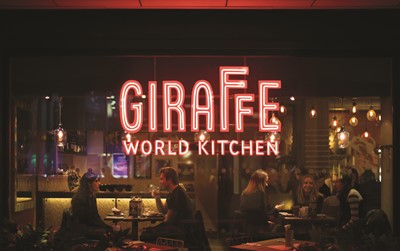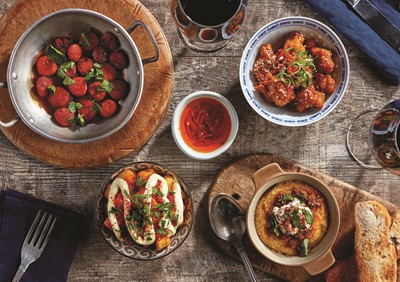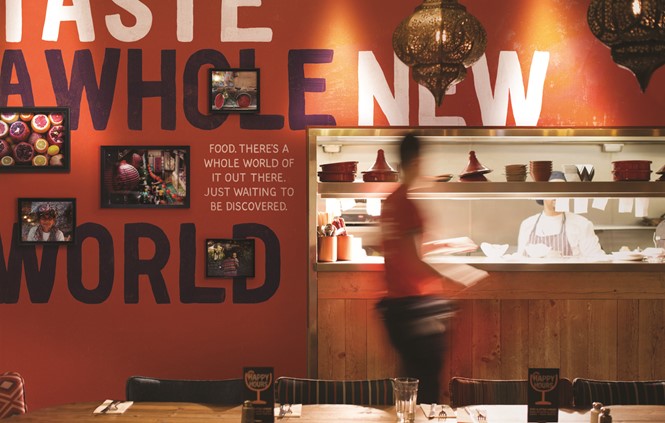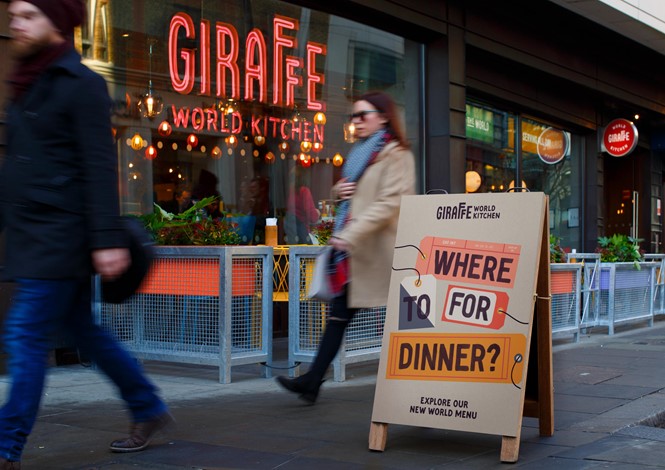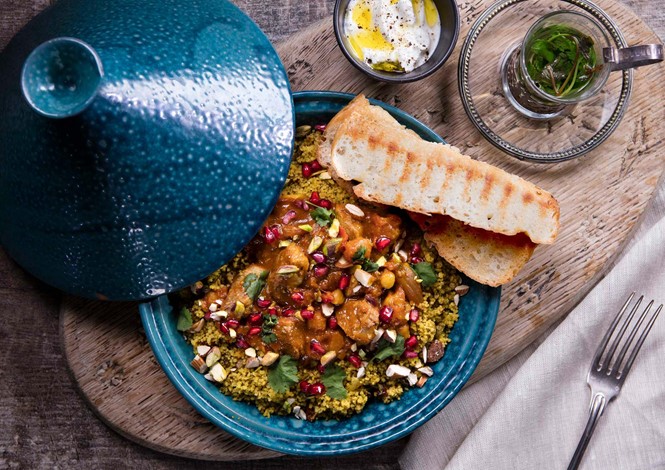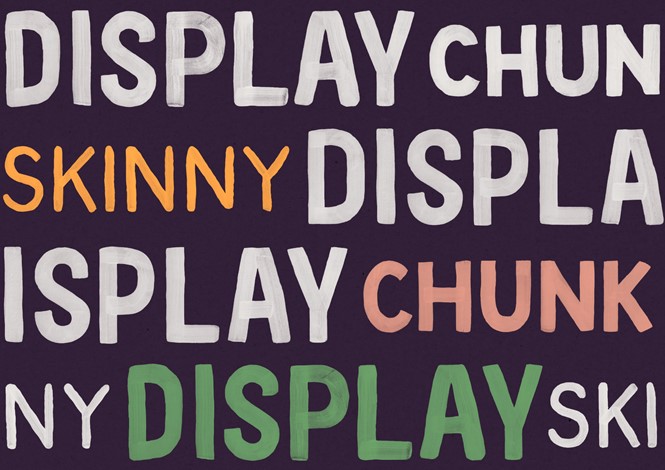Brand experience: Giraffe World Kitchen
For Giraffe World Kitchen, a change in ownership prompted a change in brand and brand experience. How has the restaurant attracted a new audience while remaining relevant to its loyal customers? Amy Sandys investigates
Walking along the pavement, looking for somewhere to eat, you pass a restaurant illuminated with the sign, ‘Giraffe World Kitchen.’ A noticeboard outside asks, ‘Where to go for dinner?,’ and the aroma of chickpea curry, spicy rice bowls or jerk chicken fills the air outside; your nose twitches. You go in, past specially-curated artefacts and walls of hand-painted typography which match the authentic, earthy nature of the restaurant’s interior. There are photographs on the wall depicting continents well-travelled; a waiter, friendly in a comfortable uniform designed specifically to complement the restaurant’s aesthetic, welcomes you to a table. It’s hard to specify the cuisine being served from the open-plan kitchen, but that doesn’t matter. You could be anywhere in the world.
It is this feeling of placelessness that informed how London-based brand consultancy Ragged Edge redeveloped the brand experience for successful restaurant chain, Giraffe. Founded as Giraffe Restaurants in 1998 by Juliette Joffe, Russel Joffe and Andrew Jacobs, Ragged Edge saw the unique brand poised to assume an aesthetic based on the anticipation of travelling and discovering new places. Yet, says Matt Smith, design director at Ragged Edge, what makes Giraffe’s offering unique is not basing itself on one specific location. Rather, the experience of visiting Giraffe is reminiscent of many different cuisines, from many different cultures. Smith says, “This idea [of placelessness] meant we started to look at things like hand-painted typography and unusual objects and colour palettes that felt sun-kissed and warm and based in food. It feels like you might have stumbled across it on holiday or on your travels but you couldn’t specifically place it.” But, Ragged Edge co-founder, Max Ottignon, adds, “The challenge was neutrality in terms of place but still having heaps of character. We had to get that balance right – you can’t sacrifice the character and the excitement.”
Ragged Edge worked to capture a sense of curiosity and adventure that dates back to Giraffe’s original founding. That commitment has helped support the growth and expansion of the restaurant chain and bring it to life in a new, authentic way.
Finding its integrity became the first step toward rejuvenating Giraffe’s – now Giraffe World Kitchen – brand experience, updating its visual identity and revamping its customer offering. Despite a successful UK operation, Giraffe was struggling to communicate its unique selling point in a marketplace made competitive through the introduction of restaurants serving a variety of cuisines. June 2016 saw previous owner Tesco sell the Giraffe brand to food investment holding company Boparan Holdings; Ragged Edge then began the project, in collaboration with Giraffe. “When we started work with Giraffe, they were owned by Tesco and they were having some challenges insomuch as Giraffe had slightly lost sight of what it stood for,” says Ottignon. “It was still doing well, but customers didn’t really understand what they would get at Giraffe restaurants – the feedback showed they were unsure of its proposition as distinct from other operators.” So, in a competitive retail environment where customers demand an experience as well as food, Ragged Edge responded by broadening Giraffe’s horizons – as well as its menu.
A key feature of Giraffe’s new brand was moving away from a focus on young families, and towards adults and young professionals. Ottignon says, “Giraffe has always been successful with families, so the brief was to bring people in, in the evenings. Getting that balance between being a family restaurant and being somewhere fun, exciting and a bit cutting-edge was important.” While still catering to a loyal family-based audience, the new brand strategy focuses on encouraging Instagram-happy generations to experience the sophisticated, authentic side to Giraffe – and to share their experience via social media.
Emphasised by a new tagline, ‘Taste a whole new world,’ the words reflect Giraffe’s offering while corresponding to the Giraffe World Kitchen brand name and its use of storytelling through brand touchpoints such as the menu and social media posts. However, the Giraffe brand experience extends beyond the phone screen. For a brand that relies heavily on its presence in transient areas, such as airports and shopping centres, developing an identity tantamount to the excitement of its patrons was vital. Such places are often described through the neologism ‘non-place,’ because they perpetuate anonymity among those who frequent them. While coinciding well with Ragged Edge’s aim of developing a sense of placelessness in the Giraffe restaurants, being situated in areas with high footfall and few regular customers meant Ragged Edge had to work Giraffe’s core brand values into a welcoming and memorable experience. “Out of the ‘Taste a whole new world’ brand idea we then started to develop a narrative to bring the territory to life,” says Ottignon. “We used four values – curious, real, unexpected, vibrant – and those values were absolutely fundamental to everything we did moving forward. They set the tone for the creative but also for the application of the brand across every touchpoint.”
But, says Ottignon, using brand values to demonstrate the Giraffe founders’ passion and sincerity was also paramount. “With values it’s a real balancing act,” he says. “It was really important that it felt real and authentic, and that the values come through in everything from the menu design to the food. We wanted to use real recipes that people had discovered, rather than trying to fake it.” And ensuring that the Giraffe brand was energetic and exciting without alienating its core clientele posed one of Ragged Edge’s biggest challenges.
Visually, the new Giraffe World Kitchen logo formed an important part in the successful delivery of a brand based on adventure. An aspect of the Giraffe brand which is present across every touchpoint, the logo required enough flexibility to function on all manner of materials while reflecting Giraffe’s new brand direction. From staff uniforms to signage and coffee cups, the reworking of Giraffe’s logo based on a specification of its heritage and future outlook became a key signifier of the brand’s evolution. “It feels like an embodiment of those values, it feels real. The little Fs have got a sense of curiosity in the way it almost represents a giraffe peeking above the trees, and it feels unexpected as well. It’s a perfect encapsulation of everything we’ve done – right through to the whole brand experience, it just feels coherent,” Ottignon says.
Smith says the new Giraffe experience clarifies the brand’s offering while instilling a purpose behind the company to drive it forward in the future. Through a carefully crafted approach relying on neutrality without being dull, globality while remaining local, the brand’s core values combine to create a multi-faceted, energetic eating experience. And, just like Giraffe’s food, it leaves it customers wanting more.
Peer review
Dan Einzig, founder, Mystery Design
It’s always easy to critique design work, without being privy to the client meetings, presentations and feedback. One of the hardest challenges facing all designers is to sell their vision to a client and to navigate the random subjectivity that often rebounds from what start as great ideas. With that in mind, I can only comment on what I’ve seen from my personal perspective at Mystery Design, which created the original Giraffe branding when it first launched in 1998 and worked with the brand as it grew for 14 years prior to it’s ill-fated sale to Tesco. (Ill-fated for the brand experience, not for the founders.)
I was pleased to hear that Giraffe had been bought by Boparan Ventures and have kept a close eye on its development as it is still close to my heart. We always used to describe the brand as having something of an independent spirit – even when it grew to over 40 sites, so I was excited to see what would happen.
The origins of the Giraffe brand were based on the simple notions that giraffe have the largest hearts out of any land animal on Earth, giraffe roam the plains of Africa and their extraordinary height allows them to see from a different perspective. We wanted to create a big-hearted brand with a sense of culinary adventure and a licence to do things their own way. An innocent brand archetype, joyfully celebrating ‘a fresh view of the world.’
I’m glad to see that the new branding is clearly an evolution of the original positioning. But, more humour and illustration, which were always important parts of why customers fell in love with the brand, wouldn’t have gone amiss.
The scale of the challenge – to create a family-friendly brand that Millennials also want to associate with – was large, especially as many Millennials will have grown up been taken to Giraffe by their parents. We grappled with that challenge too, and although the new logo and the hand-painted letters are, for me, a possible backwards step in that ambition, the overall brand tone of voice does seem more adult-friendly. The new colour palette has been wonderfully expanded through the brand evolution and the packaging design is particularly bold and effective.
I am hoping there are still some mystery touches in the new branding that I haven’t noticed yet, that will inspire that powerful connection and subsequent advocacy with current customers.
